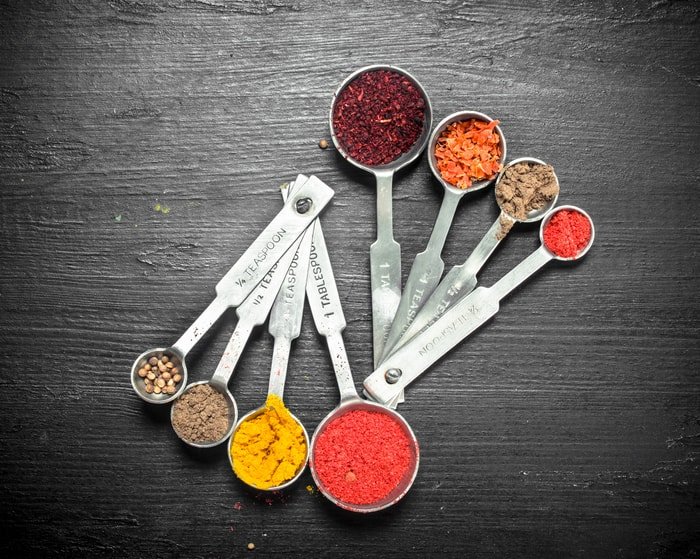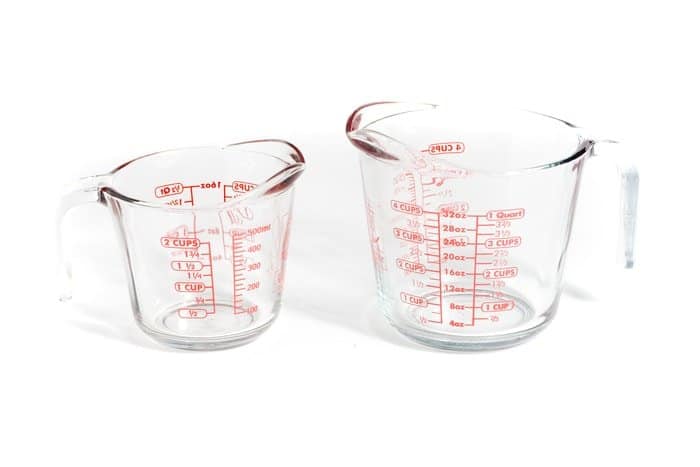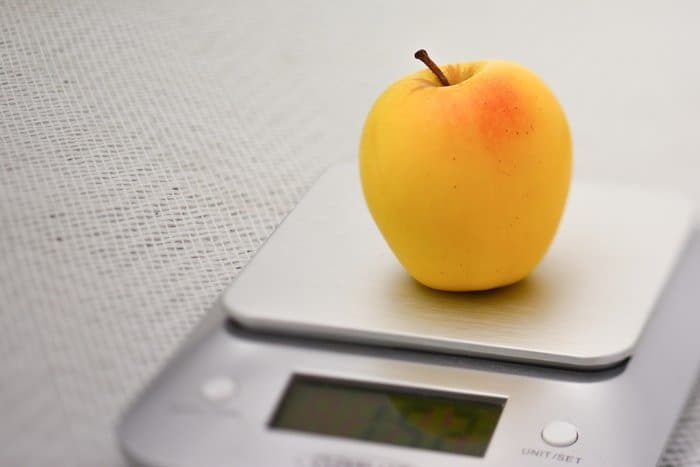Last Updated on January 11, 2022
Have you ever spent hours baking a cake just to find out that it tastes terrible? You may have second-guessed yourself trying to remember if you left out sugar or even eggs. You may realize that you included everything and cannot figure out what the problem is. Before you classify yourself as a terrible baker, the issue could be that you did not measure everything properly. Baking measurements are crucial if you want to bake an incredibly delicious dessert.
Before starting the next cake you should get a baking measuring conversion chart that can help you with some tricky measurements. Here are five simple steps that can turn an ordinary person into a great baker.
Step 1: Learn More About Baking Measurements Equipment
Following a recipe to make a scrumptious baked good should be simple, but if you do not measure things properly, you could end up with something that you would not even feed to your dog. You should become familiar with the various tools that you can use to measure things by volume.
Every great baker has measuring spoons, measuring glasses and graded measuring cups. Knowing the difference between each and when to use which tool is critical if you want to become a great baker.
Measuring Spoons
Accurate measuring spoons and cups should be used when measuring dry ingredients, like flour or sugar. These tools allow you to easily remove any excess ingredients from the top by leveling it off with a straight object like the backside of a knife.
Baking Measurements: Graduated Measuring Glasses
Graduated measuring cups should be used to measure wet ingredients because they can give you the most accurate measurement. You do not have to worry about spilling water or oil all over the floor by trying to fill a measuring cup to the top.
Digital Scale
Your kitchen needs to have a baking measuring conversion chart so that you can convert from graduated measuring to standardized units of measurement easily. Some recipes will measure liquids in milliliters, while in the United States we often measure in cups or tablespoons. If a recipe calls to measure something by weight, it is crucial that you have a kitchen digital scale. This scale can help you measure correctly and accurately to make a delicious dessert.
Step 2: Measure by Volume
Wet Ingredients
Graduated measuring cups should always be used to measure wet ingredients. When filling a graduated measuring cup, you always need to examine it from eye level to ensure that you are not over or under measuring. The bottom of the meniscus should be in the middle of the line you are measuring to. You should avoid measuring liquids in measuring cups to prevent spills all over your kitchen and to prevent inaccurate measurements. Some recipes may be in standard measurements, like liters, so it is important to convert them into their US equivalents using a conversion chart.
Baking Measurements: Dry ingredients
Dry ingredients should always be measured using measuring cups and spoons because these allow you to level off the ingredients at the top using a straight object. Leveling off the ingredients can ensure that you have a perfect measure each time. When measuring dry ingredients the amount that the ingredient compresses inside of the measuring cup can vary greatly depending upon the method in which it was obtained. For instance, if you scoop flour out of a container it will weigh more than if you sift the flour into the measuring cup.
To make the perfect baked goods each time it is crucial that you check the recipe to see how they poured their ingredients. If the recipe calls for the ingredients to be packed you should pack the ingredient into the measuring cup or spoon. Measuring is everything so it is critical that you follow the directions. Researchers have found that the dip and sweep method produces the smallest differences between cooks.
Step 3: Measure By Weight
Some recipes will call for you to measure your ingredients by their volume or by their weight. While many people think that an ounce is the same as a fluid ounce the two are different because ounce measures weight and fluid ounce measure the volume of an ingredient. In the United States, most recipes follow the standard rule of one cup of flour is equivalent to 5 ounces or 148 grams.
If you are measuring by weight you will need a digital scale. To measure using a scale you need to put the graded cup or bowl on the scale and zero it. After the scale is zeroed you can add your ingredients until your scale reaches the desired weight. Eggs could be weighed on a scale or measured by volume, however, most recipes will tell you the size egg you should use.
Step 4: Learn The Most Common Baking Measurements Abbreviations
To help save you time in the kitchen and to ensure you are using accurate measurements for baking you should know the most common baking abbreviations listed here.
Unit of Measurement
In recipes, you also have to know how units are abbreviated in order to ensure you are using the proper measurement. For example, t means teaspoons, T means tablespoon, and C means cup. While there are other abbreviations, these are the most common.
Step 5: Know the Most Common Baking Measurements Conversions
If you are going to take up baking as a hobby you should know the most common baking conversion measurements in order to help you bake more accurately and precisely. This website has a free printable conversion table that you can use in your kitchen. When you are converting between volume and weight it can be challenging because one cup of all-purpose flour weighs more than one cup of Irish style flour. If you are looking for the most precise conversion chart between volume and weight measurements, you can find it here.
Measure Equivalents
Pinch or dash = less than 1/8 teaspoon
3 teaspoons = 1 tablespoon
2 tablespoons = 1 fluid ounce
1 jigger = 1 1/2 fluid ounces
4 tablespoons = 1/4 cup
5 tablespoons plus 1 teaspoon = 1/3 cup
12 tablespoons = 3/4 cup
16 tablespoons = 1 cup
1 cup = 8 fluid ounces
2 cups = 1 pint or 16 fluid ounces
2 pints= 1 quart or 32 fluid ounces
4 quarts = 1 gallon
Baking can be a very fun thing to do, but understanding the proper way to bake and measure your ingredients can be a challenge. Before starting to bake your next cake, pie, or cookies you should understand the difference between measuring wet and dry ingredients, how to convert between volume and weight, and why weighings your ingredients may be the best option. If you have had trouble baking decadent desserts in the past you may need to refine your measuring skills.

Karen is a passionate pastry chef who loves to create delicious baked goods. She has been in the culinary arts for over 10 years, honing her skills and perfecting her craft. Karen is known for her creativity and attention to detail, creating unique desserts that bring a smile to everyone’s face. She is always looking for ways to challenge herself and come up with new recipes that are both tasty and visually appealing. Karen loves to experiment with different flavors and textures, and she is committed to providing the highest quality of products to her customers.






